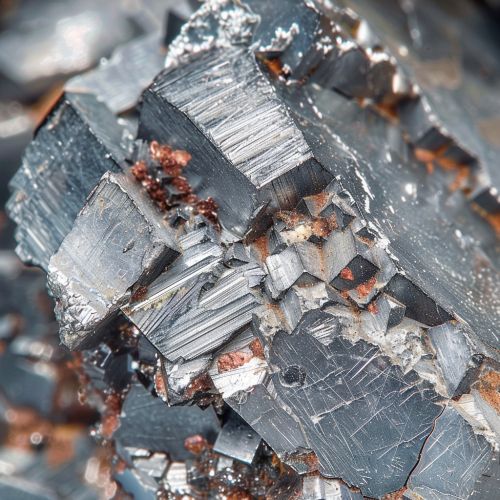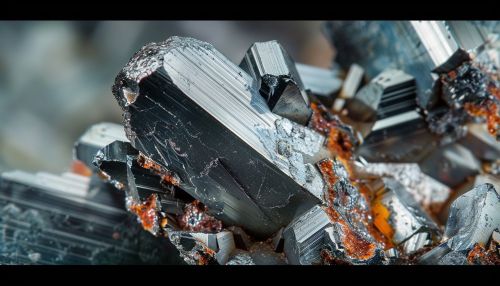Hematite
Introduction
Hematite is a common iron oxide mineral that is found in rocks and soils all over the world. It is the most important ore of iron and it has been used by humans as a pigment for at least 40,000 years. The name hematite comes from the Greek word for blood, 'haima', because hematite can be red, as in rouge, a powdered form of hematite. The mineral is often referred to as black diamond.
Properties
Hematite is a mineral, colored black to steel or silver-gray, brown to reddish-brown, or red. It is mined as the main ore of iron. Varieties include kidney ore, martite (pseudomorphs after magnetite), iron rose and specularite (specular hematite). While these forms vary, they all have a rust-red streak. Hematite is harder than pure iron, but much more brittle. The mineral can precipitate out of water and collect in layers at the bottom of a lake, spring, or other standing water. It can also occur as a result of volcanic activity.


Formation and location
Hematite is one of the most abundant minerals on the Earth's surface and in the shallow crust. It is an iron oxide with a chemical composition of Fe2O3. It is a common rock-forming mineral found in sedimentary, metamorphic, and igneous rocks at locations throughout the world. Hematite is the most important ore of iron. Although it was once mined at thousands of locations around the world, today almost all of the production comes from a few dozen large deposits where significant equipment investments allow companies to efficiently mine and process the ore.
Uses
Hematite's popularity in jewelry was at its highest in Europe during the Victorian era, and in Asia during the 1960s. In addition to being used as an ornamental stone, hematite is used in a wide variety of other applications, including the production of pigments, preparations for heavy media separation, radiation shielding, ballast, and many other products.
Hematite in culture
Hematite has a long history of use as a pigment. As a gemstone, this material is often carved but very rarely faceted. Despite its association with blood and the color red, hematite’s color can range from black and metallic gray to brownish red in thin slivers or crystals.
